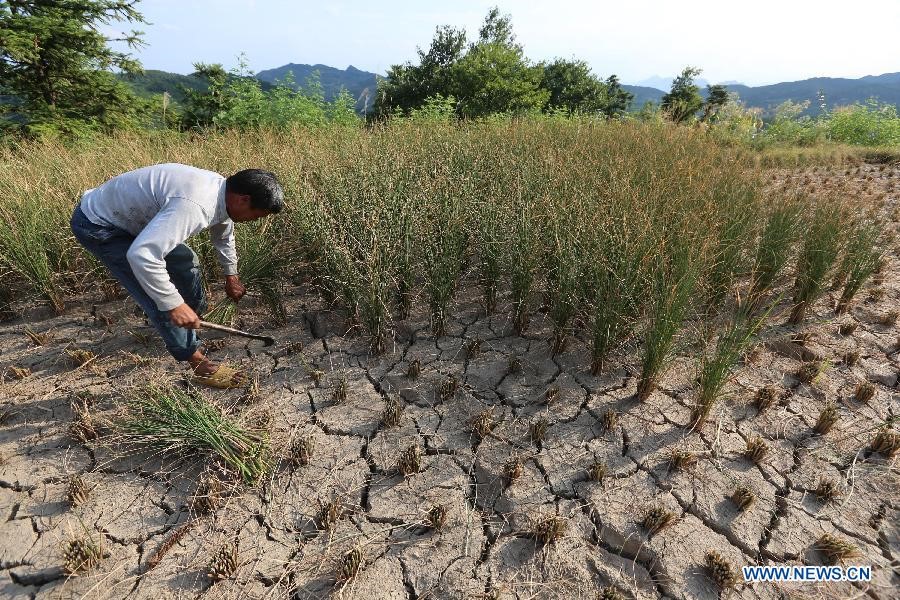Does the microwave remote sensing of soil moisture provide added values for the short-term drought monitoring?
Date:2015-05-28
Short-term droughts during the crop growing seasons sometimes occur together with abnormally high temperature. Positive feedbacks between the land and atmosphere often intensify the drought conditions. These droughts are recently termed as “flash droughts” due to their rapid development, unusual intensity and devastating impacts. A flash drought during the summer of 2013 affected 13 provinces in southern China, and damaged over 2 million hectares of crops in Guizhou and Hunan provinces alone.

Figure 1. A villager cut the grain seedling in a dried-up field in southern China’s Hunan Province during the 2013 severe drought. (Source: news.xinhuanet.com)
Surprisingly, the merged soil moisture product, newly published by European Space Agency-Climate Change Initiative Programme (ESA CCI), missed the extreme drought event. This raises the question of whether the microwave remote sensing of soil moisture is useful for monitoring short-term droughts during crop growing seasons.
Using in-situ soil moisture observations from over 300 agriculture-meteorology stations and multi-source of soil moisture analysis datasets, YUAN Xing and MA Zhuguo from the Institute of Atmospheric Physics/CAS , Ming PAN from Princeton University and SHI Chunxiang from National Meteorological Information Center found that the ESA CCI merged product was worse than the best reanalysis products in terms of characterizations of short-term droughts over China. The underlying reason, according to the researchers, is the inhomogeneous meteorological forcings of the soil moisture reanalysis that was used to merge the satellite soil moisture retrievals.
The researchers then used a quantile-mapping method and corrected the satellite products with a new reanalysis reference dataset, and they found the added values of the microwave remote sensing products in short-term drought monitoring both at station and river basin scales. The results indicate that the satellite data, when properly calibrated, could provide independent short-term drought information from space.
This work has been accepted for publishing in Geophysical Research Letters.
http://onlinelibrary.wiley.com/doi/10.1002/2015GL064125/abstract
Contact: Dr. YUAN Xing, yuanxing@tea.ac.cn
